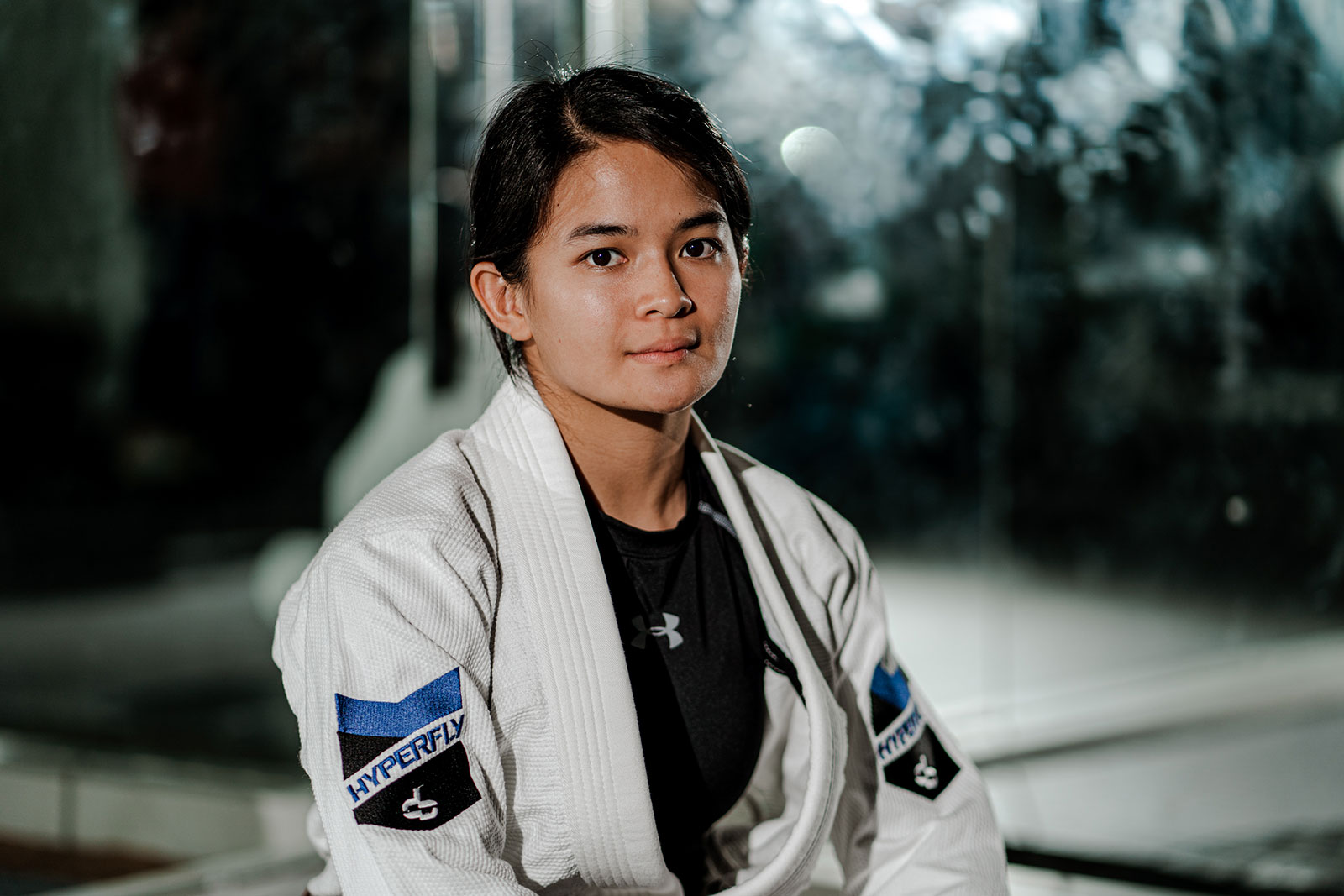We use cookies to ensure you get the best browsing experience. By continued use, you agree to our privacy policy and accept our use of such cookies. For further information, click FIND OUT MORE.
The boys at the gym could only watch as the petite woman takes down her much-larger male sparring partner.
Meggie Ochoa did it all by literally starting from the bottom.
She drops to the floor and lies on her back. Then she goes for the legs and does a quick sweep. The man goes down and the woman’s on top.
Next thing you know, Meggie has her opponent by the throat.
“Ang feeling kasi nila kapag nakahiga talo na, di ba? Usually sa judo kapag nabato ka, or sa wrestling, nabato ka, nakalagay na ang back mo sa mat, talo ka na,” she says. “Sa jiu-jitsu, baligtad eh. Minsan kung sino ang nakahiga, siya pa ang mas nag-do-dominate.”
Meggie is the perfect example that looks could be deceiving. One glance at her five-foot frame and you would hardly believe that she is a world champion several times over.
But jiu-jitsu is also a sport of technique, not just size and strength. Even though she is shorter than most opponents, she can still find a way to excel through her skills.
“Kahit maliit ka, matangkad ka, mataba ka man, payat ka, sobrang dami kasing variations ng techniques na merong su-swak doon sa body type mo,” she says.
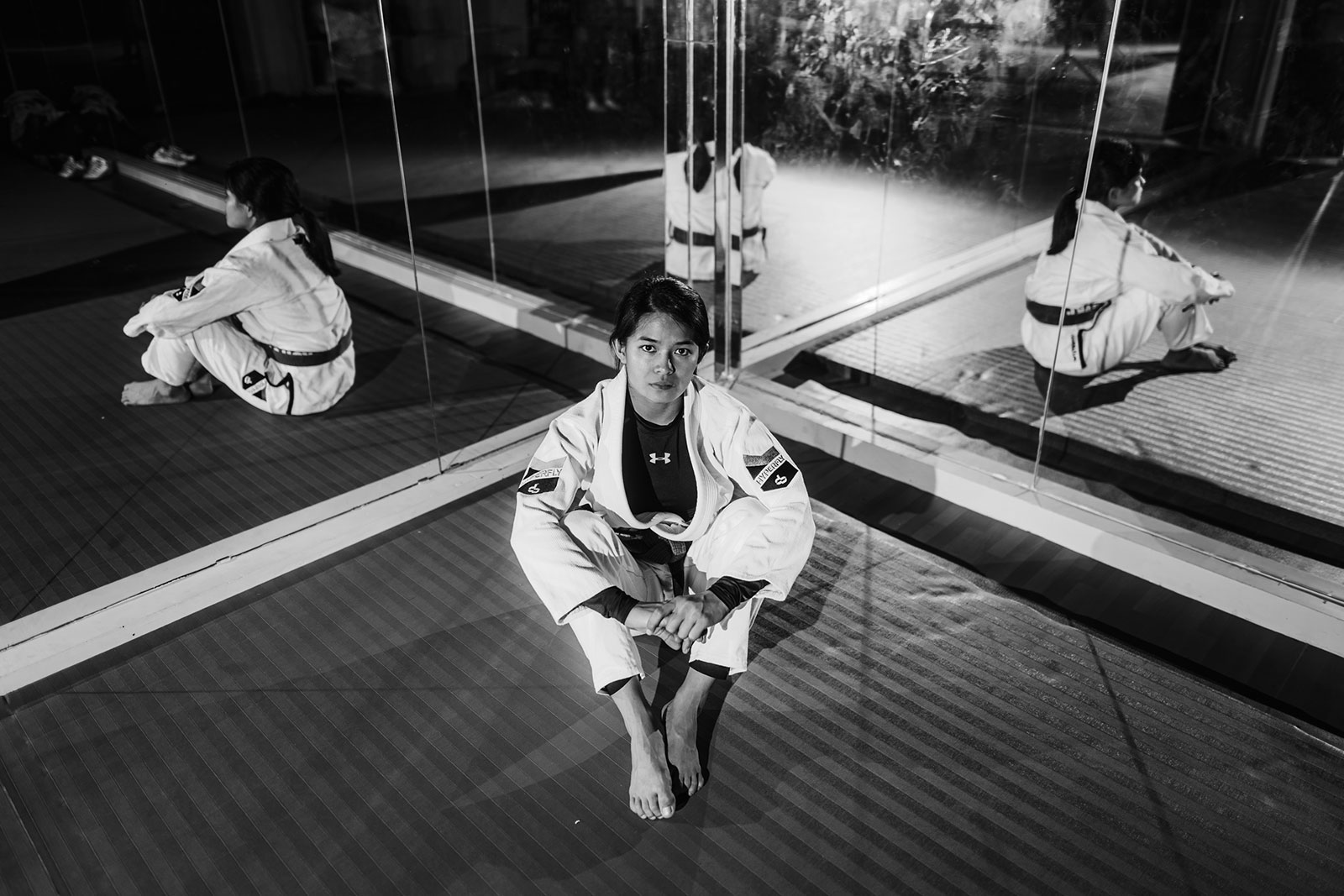
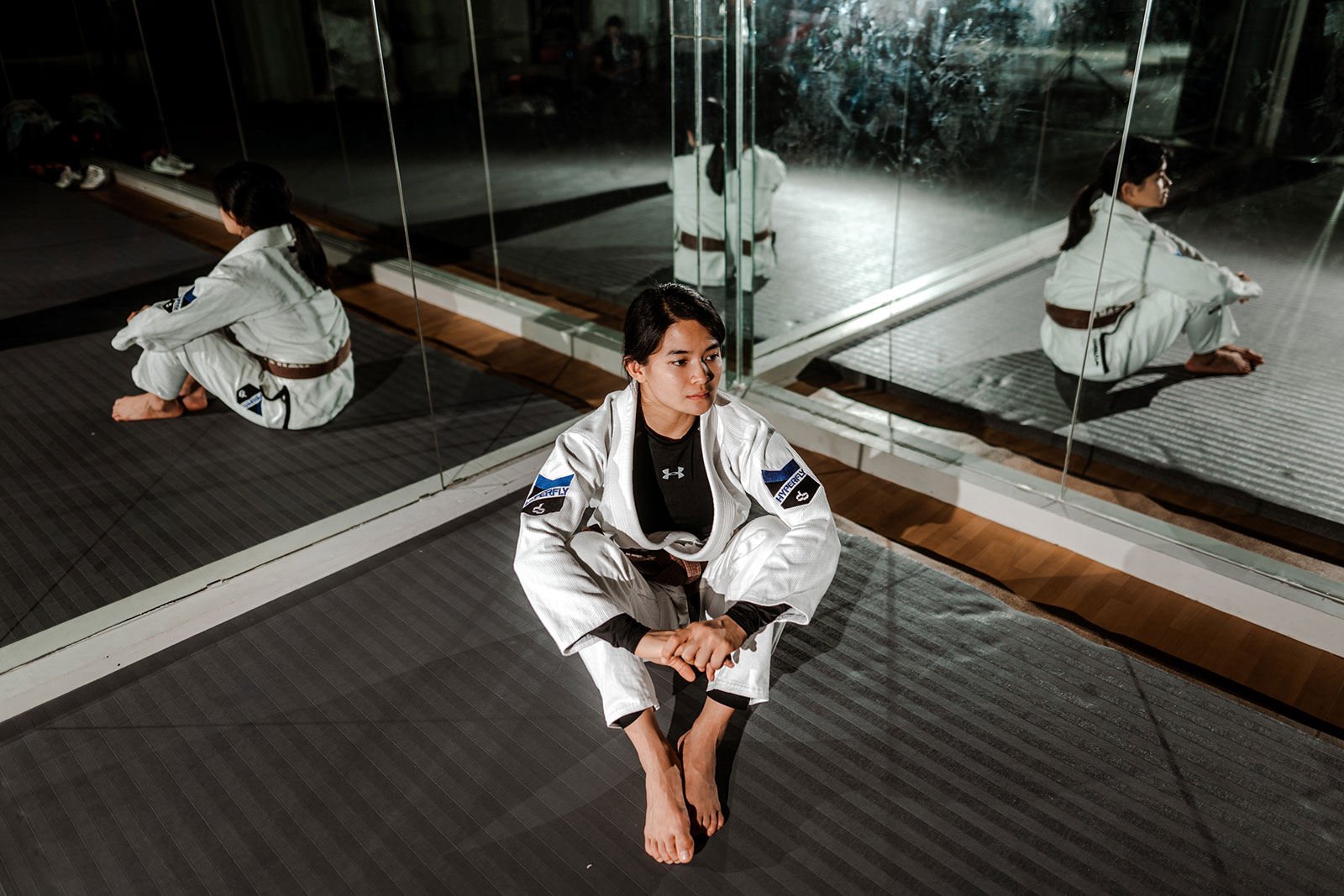
In fact, being small was also what got Meggie into jiu-jitsu in the first place.
She dabbled into mixed martial arts in college, but there weren’t many girls to go up against. “I really want to fight pero, ayun nga, being small, it was very difficult for me to get opponents kasi very limited pa lang ang babae na nag-MMA noong time na ‘yun.”
And so, Meggie tried jiu-jitsu in 2013.
In just a few years, she rose to become one of the most accomplished jiu-jitsu athletes in the Philippines, with a long list of medals and championship titles from competitions and federations all over the world.
Her most recent feats include her gold medal at the 2019 Southeast Asian Games held on home soil, her bronze medal 2018 the Asian Games held in Jakarta, Indonesia.
Meggie was also the first Filipino to win a gold medal at the Jiu-Jitsu International Federation World Championship in Sweden.
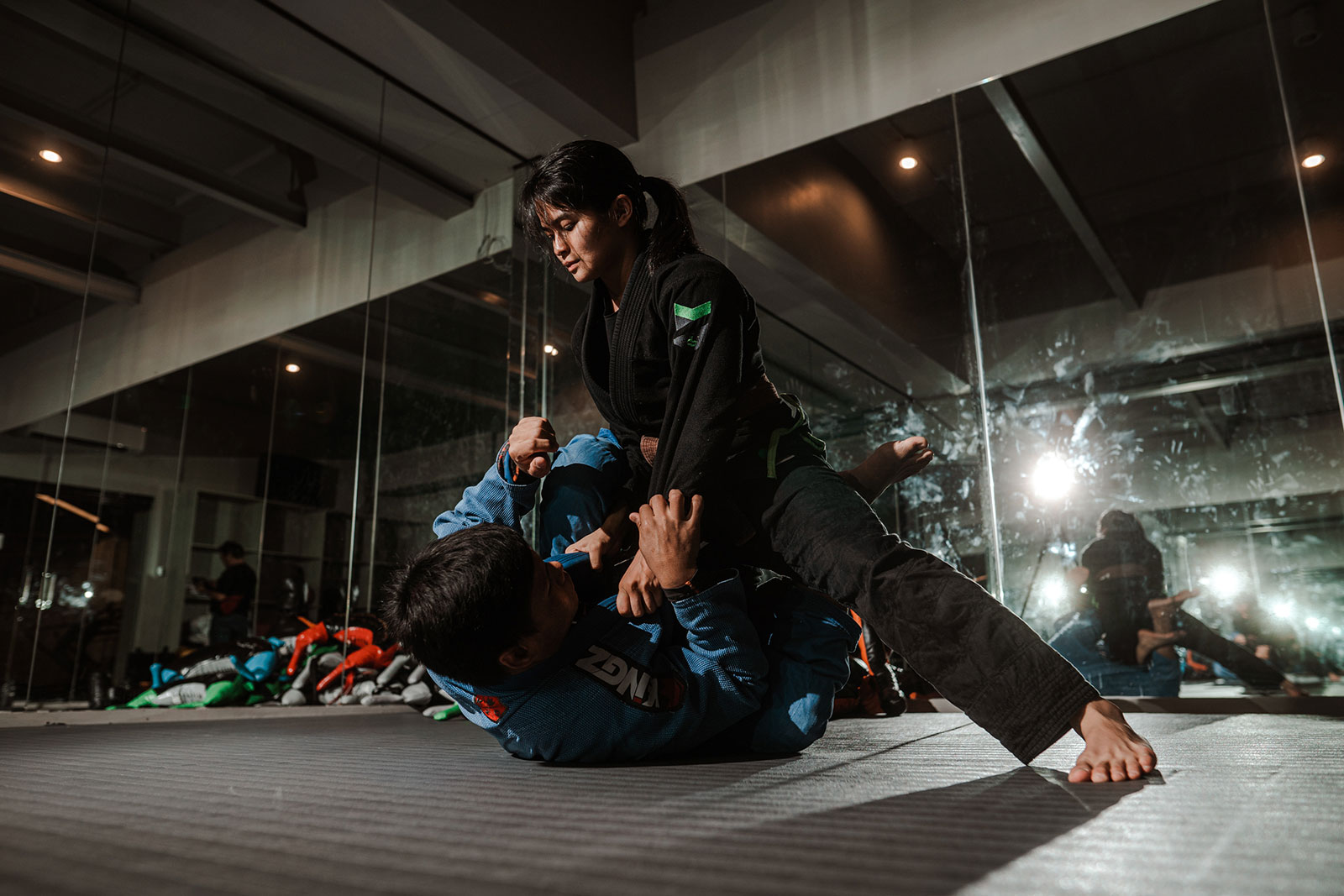
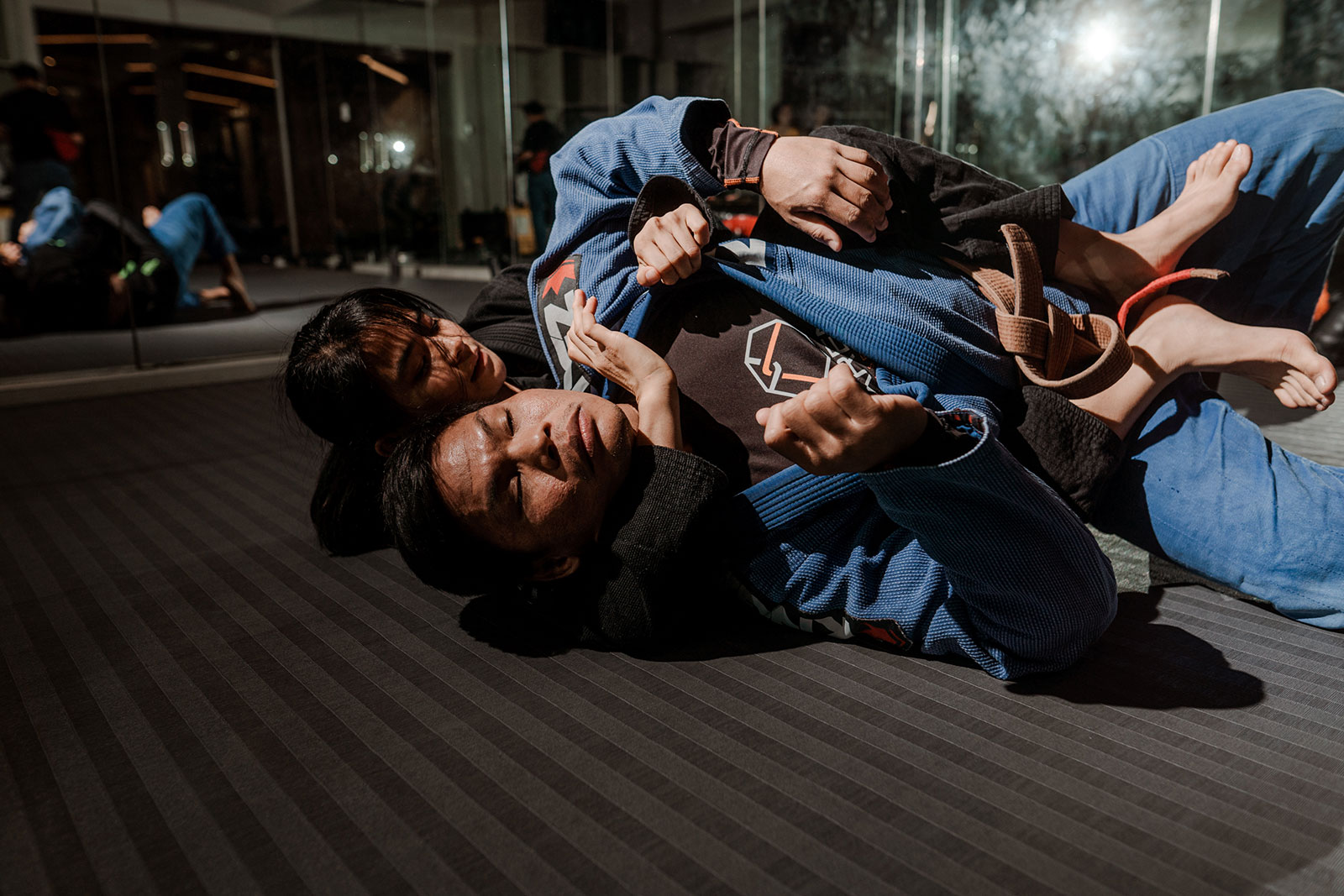
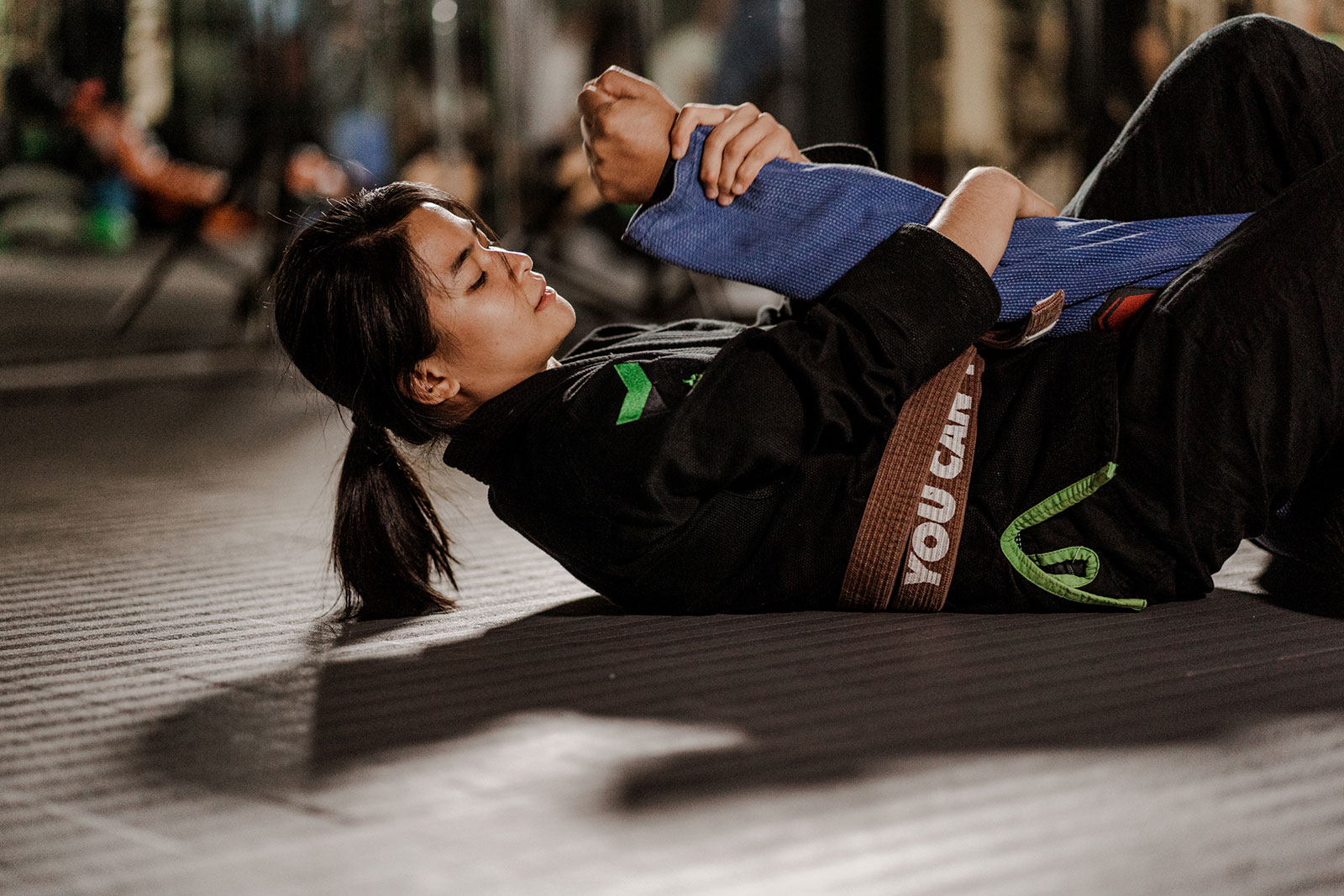
Her achievements on the mat could already be considered as the pinnacle of any professional athlete’s career, but it was a news item she read five years ago that changed the trajectory of her mission.
“It's not just about winning medals anymore,” she tells GMA News Online at a Pasig City gym, where she trains and holds jiu-jitsu classes.
In 2015, Meggie read an article about a girl in Mexico named Karla Jacinto who was raped 43,200 times after falling victim to sex traffickers.
“Hindi ako makatulog when I read that article... This is happening in the world? To children?” she says.
“I researched about it and I found na dito sa Pilipinas nangyayari rin pala siya. And very rampantly online pa. Online sexual exploitation of children is one of the most rampant forms of human trafficking here in the Philippines and it’s so bad. The victims are as young as two-month-old babies. Doon ako nagulat, sa state of humanity.”
From time to time, children as young as seven would attend her sessions. It’s part of her program called “Fight to Protect,” which aims to support victims of child abuse and sexual violence in the country through sport.

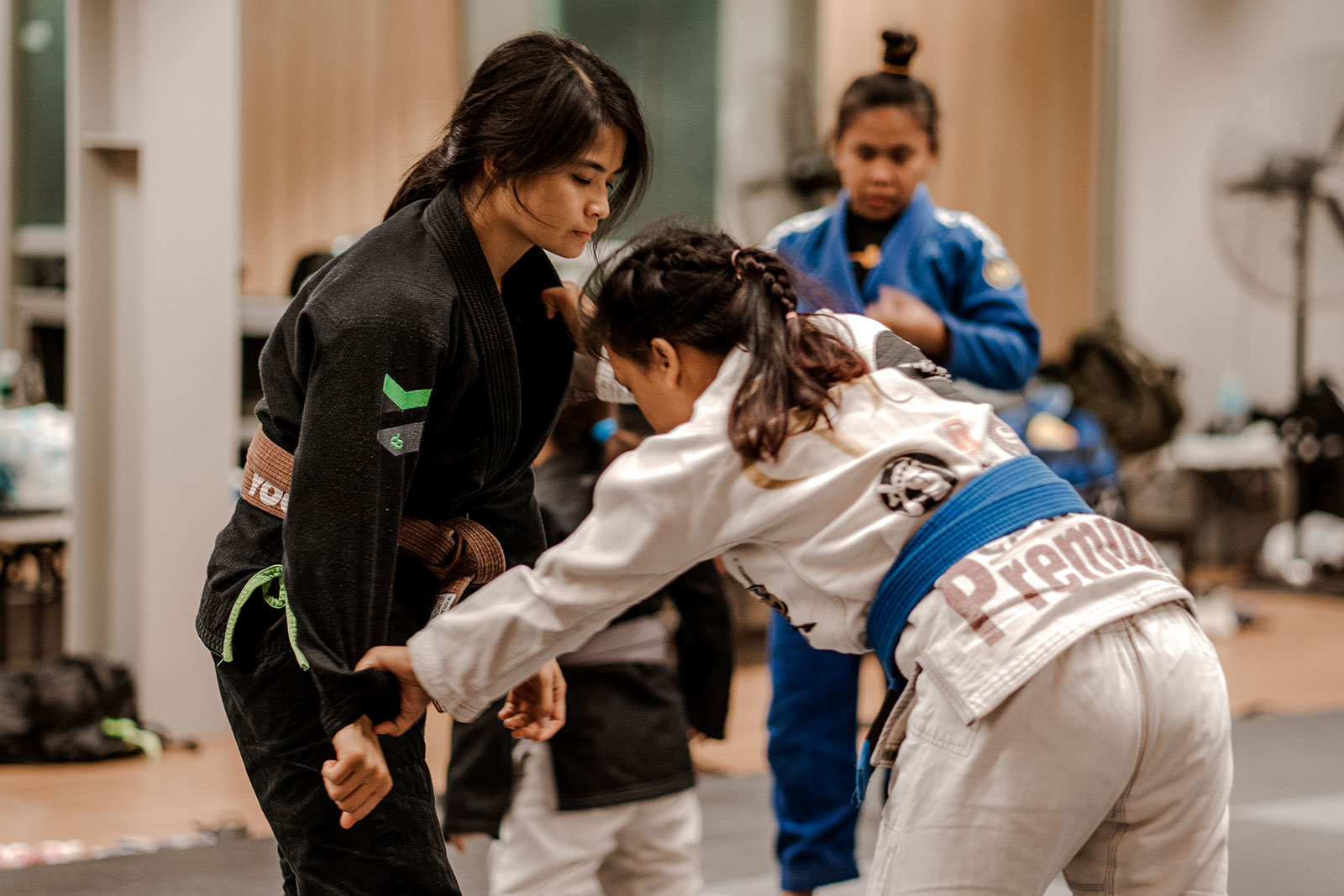
And just like that, Meggie found a purpose to use her platform as an athlete.
The jiu-jitsu champion launched Fight to Protect in 2018 and taught jiu-jitsu to more than a hundred kids who experienced abuse.
“Sobrang heartbreaking malaman ‘yung mga kuwento nila, lalo na the way that they are being treated sa court system ng Pilipinas,” she says.
“As in, I just can’t talk about it in detail kasi, syempre, ongoing ‘yung case ng iba, pero parang, What? Seryoso ba yan? Ganyan ’yung paraan kung paano hina-handle ng court system natin ‘yung case na ito na bata, minsan nga bata pang may special needs, tapos ganoon ang way ng pag-handle?”
Meggie’s advocacy made the news, but it is also the impact she made on the kids’ lives that never ceased to amaze her longtime training partner Phillip Uy.
“Sa umpisa talaga ang mga bata mahiyain. Hindi naman mawawala ‘yon. Pero after that unti-unti makikita mo ‘yung nagbi-build ang character nila, mas nagiging open sila sa mga tao. Dati sobrang timid ng mga ‘yan, hindi ka kakausapin, hindi ka titingnan. So after time naging mas open na sila sa ibang tao, sa school. Ayun. Natututo na sila unti-unting mag-trust ng ibang tao,” he says
Phillip also admires Meggie’s determination to keep Fight to Protect alive, all the while teaching adult classes and training for competitions.
“Very passionate siya sa advocacy niya. Very hands on. Minsan, nakikita ko ang hirap ng ginagawa niya. As an athlete, kailangan mo talagang mag-train, plus ito pa nga. Sobrang dami niyang ginagawa. So minsan hindi ko nga alam kung paano niya jina-juggle lahat ng schedules niya,” he says.
“Pero kung gusto mo talaga, gagawa ka ng paraan.”
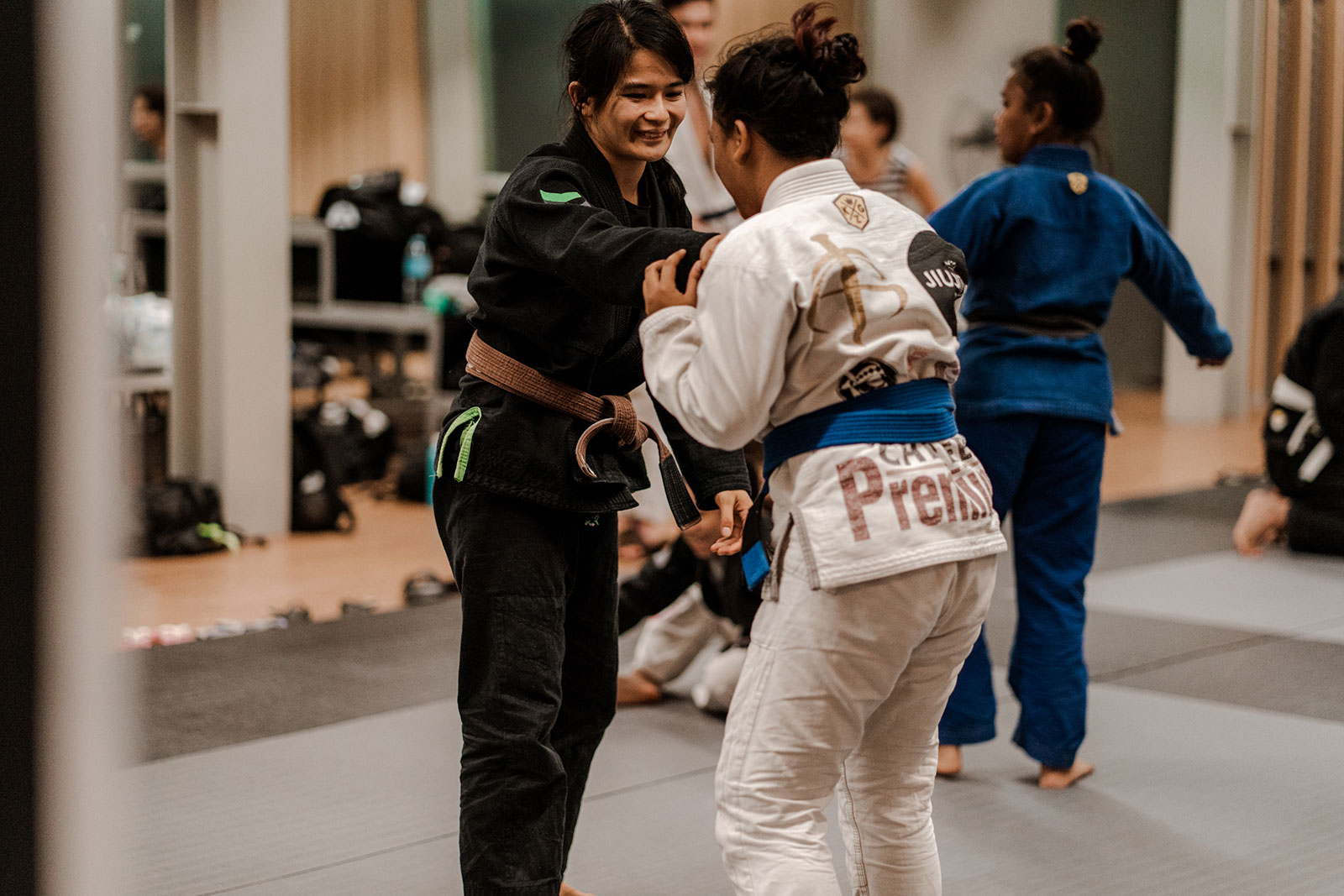
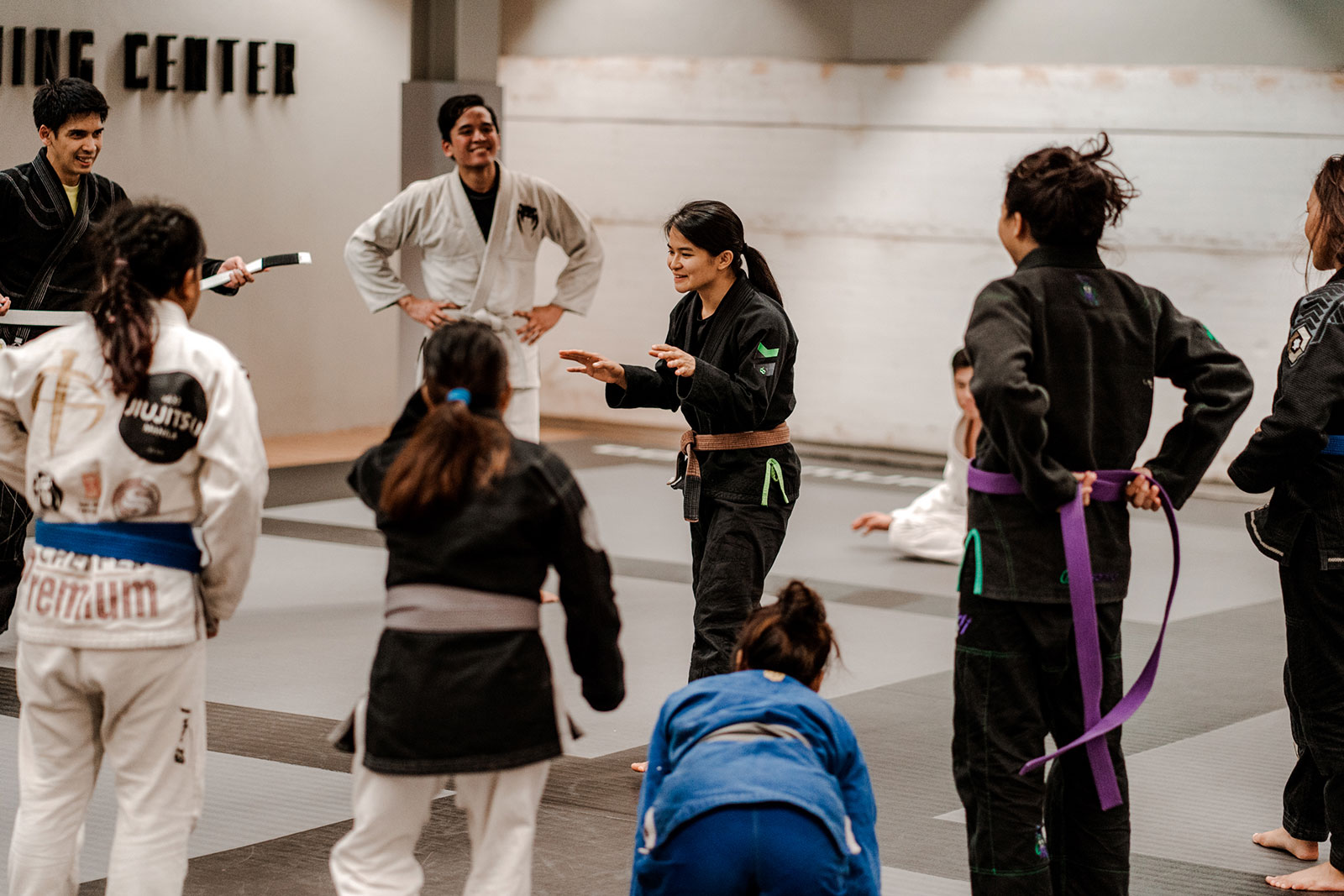
Meggie has taken down a few boys and somebody almost twice her weight, but she doesn’t want to brag about it.
She fastens her gi with a brown belt which, she points out, is not the highest-ranking color in jiu-jitsu.
Meggie would even object to the notion that all her opponents are intimidated by her.
She does, however, have something to say about guys who don’t wanna date you because they feel “intimidated.”
“Kung intimidated, ibig sabihin, hindi pa ‘yun!” Meggie says, sending the room full of girls into applause.
Asked if it is difficult to be a woman in a male-dominated sport, Meggie says no. Boys may be physically stronger than girls, but she says, once again, that it all boils down to skill.
“Kung strength versus strength ka, talo ka. Kaya talagang mas ma-ho-hone talaga ‘yung capacity mo to do more complex or more efficient techniques,” she says.
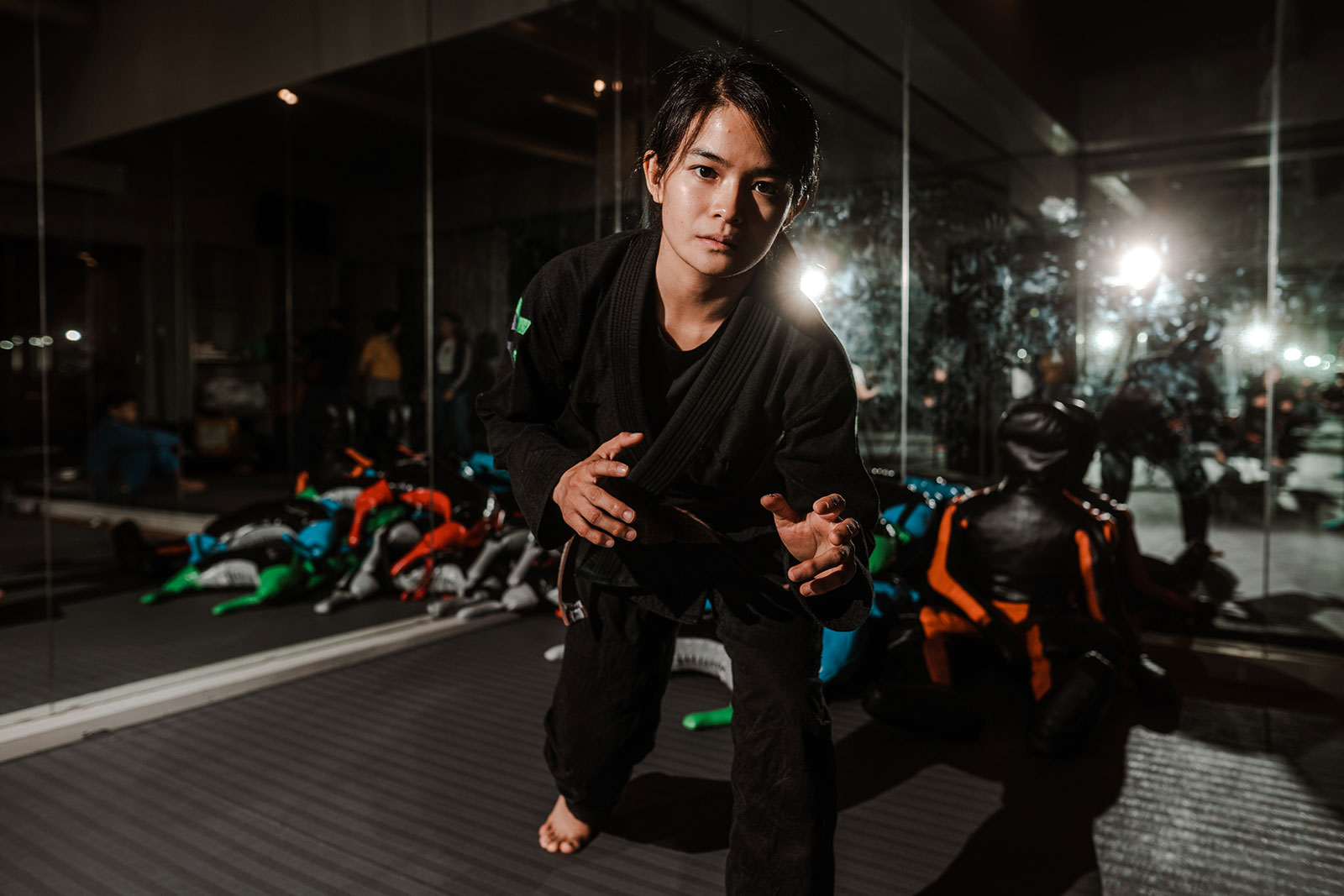
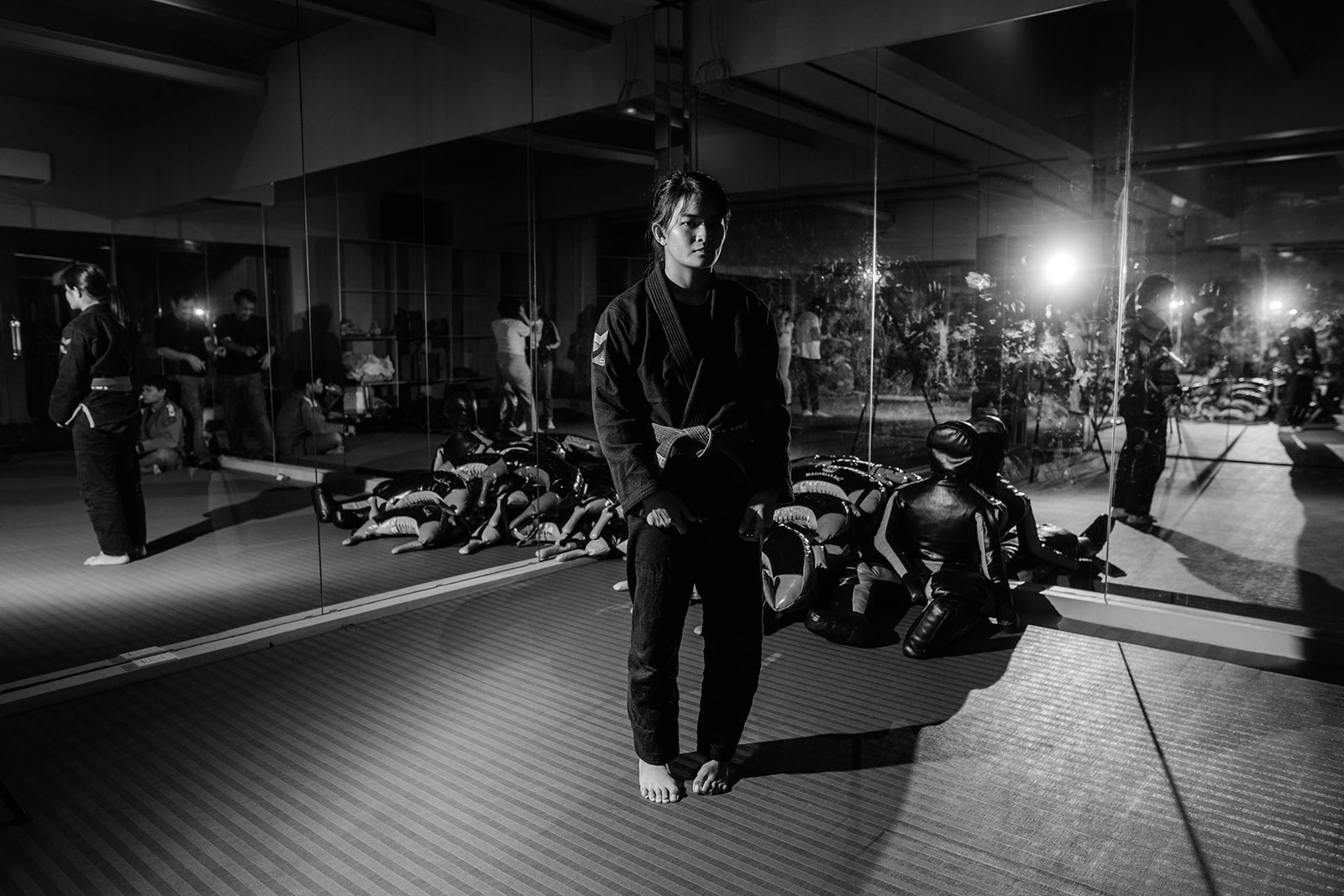
Meggie, however, knows how blessed she is not to experience any form of gender-based discrimination in her sport.
“I guess maybe na-suwerte lang din ako (na ang mga) naging communities na kinalakihan ko dito sa jiu-jitsu are (actually very) welcoming rin sa mga babae,” she says. “Never ko naman naramdaman na sinantabi ako or nakita na hindi nila ako vinalue as a person.”
Overall, Meggie smells a change for female representation in the Philippines. At least, when it comes to sports.
“I’ve seen a lot of improvement na talagang the women are actually celebrated for their performance and for how good they are in sports not just on how they look,” she says.
“I think times have changed. Now, we’re given more opportunities, we’re given more variations of things we can do and try. We have so many different kinds of areas that we can excel and that we can actually, that we can pursue.”
